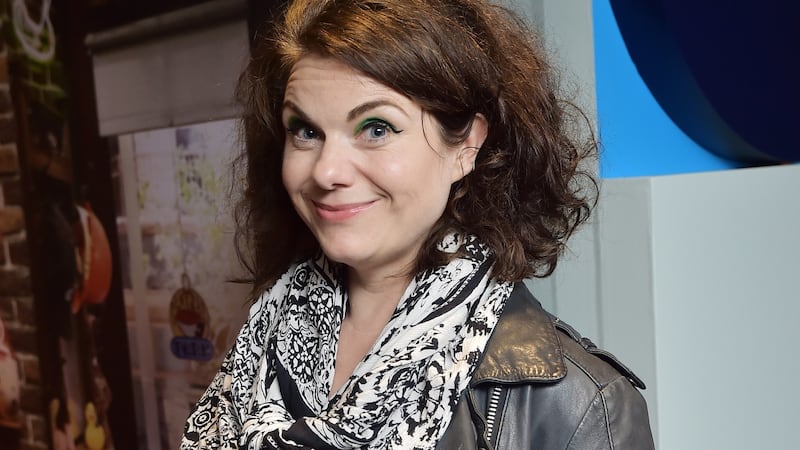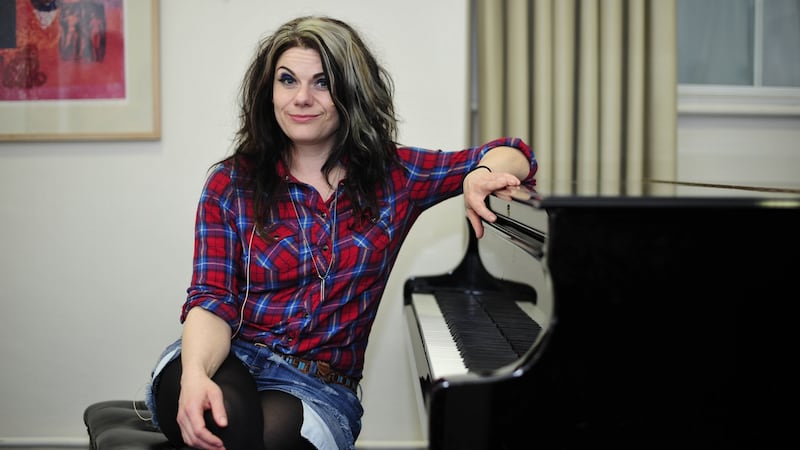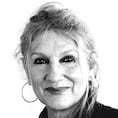Caitlin Moran is a prodigious talent; now aged 45, she has, for almost three decades, been writing, speaking, tweeting, broadcasting, interviewing, column-filling, book-, film- and TV-series-making, with the same ferocity and alacrity that, as a teenager, catapulted her out of a three-bedroom council house in Wolverhampton and into the heart of London's media landscape.
The eldest of eight children in a household that also included 14 dogs, a bundle of permanently wet towels and a single pair of tights (shared between three sisters), hers was a relentlessly chaotic childhood.
Her parents, bohemian hippies living on benefits, were a couple, she flatly reveals, who “spawned like salmon”, laying their eggs and then swimming upstream while Caitlin was left to take care of their latest toddler.
Largely home-schooled, she made a brief foray into mainstream education, courtesy of a grammar-school scholarship. In the first few weeks of term, however, and already aware of how behind she was in unfamiliar subjects such as algebra, Moran had a can of Coke opened in her face by a bullying classmate who didn’t like the cut of her jib. Contemplating years of this kind of treatment at school left her in no doubt that the public library would be her alma mater instead.
It was there, reading the free newspapers, that she saw a young reporter competition in the Observer newspaper. Her winning entry, at the age of 15, prompted the paper to offer her a summer column. Those 850 words, she says, changed her life.
A year later, she began her stellar journalistic career on Melody Maker.
I ask her if, looking back, she feels anger towards her parents?
“No. I’m grown up now.”
We discuss the long reach of generational trauma, the way that our parents’ conflicts and pain can drip into our own lives, and the way, too, that we can unwittingly pass on our own distress to our offspring.
“Dad had all the problems,” she says, wryly describing her Irish father, a would-be rock star living with the reality of a punctured dream, as occasionally “tasty” but someone who, coming from the wreckage of bombed-out Birmingham and a violent and turbulent childhood, was doing his best by providing a roof over his family’s head.
“I never realised the kitchen sink was silver,” she says, “until one day I scrubbed away the tannin.”
Her remark works as a convenient metaphor for a 30-year career as an award-winning and bestselling journalist and author, a career that has co-existed with a happy domestic life with her husband, the journalist and broadcaster Pete Paphides, and their two daughters. Their world appears ordered, structured and comfortable, and comes replete, she assures me, with a surfeit of “fluffy towels and drawers full of Marks and Sparks opaque tights”.
Young people aren't going to be passive – you've got to ask yourself: where is your money
She is speaking on Zoom from her north London home. Her writing room appears light and airy; behind her, a day bed is covered in a colourful quilt. She points out a map of Wales on a cool blue wall. Wales is where she plans to retire, she says, to a cottage where she will walk and swim and indulge her passion for gardening, an activity she once described as “playing with time – you make it in the present and imagine it in the future”.
The conversation segues into climate change, and about how to remain optimistic for your children, for their futures.
“It’s a common trope that young people are going to save the world, that they are the generation who will sort it out,” she says. “But young people aren’t going to be passive – you’ve got to ask yourself: where is your money?”

She doesn’t have a pension, she says, but any savings she has are in ethical investments with ethical banks. Retirement is probably not in her lexicon anyway, and she has no intention of stopping writing; there is a new book in the pipeline along with a new film and a TV series. She is interested in prehistory, she says, in examining mythologies, in tracing how misogyny developed.
Wearing an oversized shirt, her hair in short plaits, and speaking with a speedy energy, she appears younger than the cover photograph on her new book, More Than a Woman, might suggest. Her familiar image – gobby and provocative, with a tousled backcomb, a pair of fishnets, Doc Marten’s and extravagant eye make-up (to look, she says, “like a puffin”) – feels at odds with the assiduous character on my laptop screen.
Moran's million-selling 2011 feminist manifesto, How to Be a Woman, ignited a new generation of young women
Currently writing two columns a week for the Times newspaper, she’s not a woman to agonise over a blank document. The day after she finishes a project, she tells me, she turns over the page and starts on the next one.
A doyenne of social media (her press release says she lives on Twitter with a husband and two children), her million-selling 2011 feminist manifesto, How to Be a Woman, ignited a new generation of young women who responded in the affirmative to Moran’s eloquently concise quiz: “A: do you have a vagina? And B: do you want to be in charge of it? If you said yes to both, then congratulations. You’re a feminist.”
Moran’s feminism is both inclusive and positive. It is refreshing in an era of cancel culture – when women in the public eye, she says, are attacked by both men and other women for not being progressive or feminist enough – to find her pages permeated with a determination not to knock other women for how they live, who they love, what they wear, or what they do or don’t say on social media, where, as she points out, even “silence is offensive”.
“This is still the best time in history to be a woman,” she asserts. Trump, Johnson and their bedfellows “are the last gasp of a straight white patriarchy”.
"We are," she adds optimistically, "in an unprecedentedly fertile era of producing many, and wildly varied, female role models. This is a stelliferous age boasting the previous unimaginable stars Greta Thunberg, Malala Yousafzai, Alexandria Ocasio-Cortez, Baroness Lady Hale, Simone Biles. I could go on. Saying each of those names is like a party in my mouth."

I tell her two statistics that I had read on the morning of our interview. The first, in a report from World Vision, stated that, post-Covid, one million girls in sub-Saharan Africa faced a school ban because of pregnancy, often due to abuse and forced marriages. The second statistic, closer to home, reported that Irish gardaí had been called out to 27,000 incidences of domestic abuse since the start of lockdown.
The response she advocates, as she explains in the new book, would be the formation of a women’s union, a worldwide organisation that has women’s lives and welfare at its heart.
“Unlike a minister for women’s affairs,” she says, “a union would not be subject to a party whip.”
More Than a Woman cascades with Moran's trademark wit. Among the myriad of topics covered, concerning women of a certain age, are why wine suddenly turns against us (the answer, apparently, is the depletion of enzymes to break the stuff down), the virtues of the "maintenance shag" in a long-term marriage, and the way older women, such as Helen Mirren and Judi Dench, are described not as beautiful but as luminous, "like a talented and incredibly well-respected lamp".
The book also deals with the onset of Moran’s teenage daughter’s eating disorder, which led to self-harm and ultimately to three suicide attempts. Moran describes her family’s efforts to cope as “big work, a massive learning”.
We are a cortisol age. We have made cortisol children
We’re back where we started, at generational trauma, how we unwittingly land our children squarely in our own dungheap.
“I was telling her [her daughter] you can’t be sad, Mum had the horrible childhood,” Moran explains as we discuss teenage anxiety and depression. “We are a cortisol age. We have made cortisol children. Have we ever raised a generation of peacetime children so anxious?”
Moran, of course, never literally told her daughter not to be sad, but children somehow absorb family histories and often don’t want to add to the perceived parental burden.
Moran explains that she found little or nothing online to help the family during this period. There were accounts of children who didn’t get well, but few of children who, like her daughter, made a full recovery.
Her daughter agreed to being written about in order to help others in similar situations, but she didn’t want her name to be used – a request not adhered to by sections of the press in recent reviews of the book.
I ask Moran how her marriage survived the crisis and her reply is unequivocal. “You come through and there is still love, there is still trust. I made my match.”
It is difficult to equate the calm and resilient woman on my screen with the caricature I’d somehow assembled in my mind, a cartoon of fake leopardskin and fishnets, kneeing the patriarchy in the groin. She is all that, and more, but mainly at this stage she seems simply happy. She doesn’t sweat the small stuff any more; she has come through the fire.
“All tasks become complete one way or another,” she says. “Illness passes. Sadnesses break. Things change. Relief comes, goes, then comes again.”
More Than a Woman is published by Ebury


















